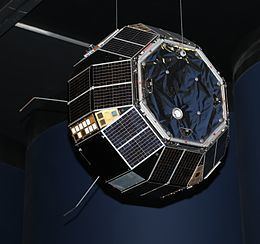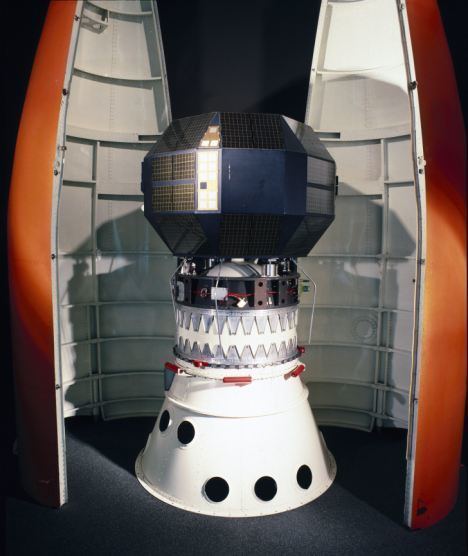Mission type Technology COSPAR ID 1971-093A Manufacturer BAC
Marconi Launch date 28 October 1971 Inclination 82.04° Launch mass 66 kg | Operator RAE SATCAT no. 5580 Rocket Black Arrow R3 Inclination 82.04° Period 1.7 hours Launch mass 66 kg | |
 | ||
Similar Astérix, WRESAT, Ōsumi, Intasat, Brasilsat‑A1 | ||
The Prospero satellite, also known as the X-3, was launched by the United Kingdom in 1971. It was designed to undertake a series of experiments to study the effects of space environment on communications satellites and remained operational until 1973, after which it was contacted annually for over twenty-five years. Although Prospero was the first British satellite to have been launched successfully by a British rocket, the first British satellite placed in orbit was Ariel 1, launched in April 1962 on a U.S. rocket.
Contents

Prospero has the COSPAR (NSSC ID) designation 1971-093A and the US Space Command satellite catalogue number 05580.
Construction

Prospero was built by the Royal Aircraft Establishment in Farnborough. Initially called Puck, it was designed to conduct experiments to test the technologies necessary for communication satellites, such as solar cells, telemetry and power systems. It also carried a micrometeoroid detector, to measure the presence of very small particles. When the Ministry of Defence cancelled the Black Arrow programme, the development team decided to continue with the project, but renamed the satellite Prospero when it was announced it would be the last launch attempt using a British rocket. An earlier Black Arrow launch, carrying the Orba X-2 satellite, had failed to achieve orbit after a premature second-stage shut down.
Launch

Prospero was launched at 04:09 GMT on 28 October 1971, from Launch Area 5B (LA-5B) at Woomera, South Australia, on a Black Arrow rocket, making Britain the sixth nation to place a satellite into orbit using a domestically developed carrier rocket. The Black Arrow's final stage Waxwing rocket also entered orbit, "rather too enthusiastically", as it continued to thrust after separation and collided with Prospero, detaching one of the satellite's four radio antennae.
Current status
A tape recorder is on board, which failed on 24 May 1973 after 730 plays.
As was noted in an episode of the BBC television series Coast, radio transmissions from Prospero could still be heard on 137.560 MHz in 2004, though the signals used in the episode would actually come from an Orbcomm satellite, rather than Prospero itself (as the later Orbcomm used the same 137.560 MHz frequency since Prospero was considered no longer active). Prospero had officially been deactivated in 1996, when the UK's Defence Research Establishment decommissioned their satellite tracking station at Lasham, Hampshire, but the satellite had been turned on in past years on its anniversary. It is in a low Earth orbit, and is not expected to decay until about 2070, almost 100 years after its launch.
In September 2011 a team at University College London's Mullard Space Science Laboratory announced plans to re-establish communications with Prospero, in time for the satellite's 40th anniversary. As of September 2012, not much progress had been made in establishing contact with the satellite due to time constraints.
